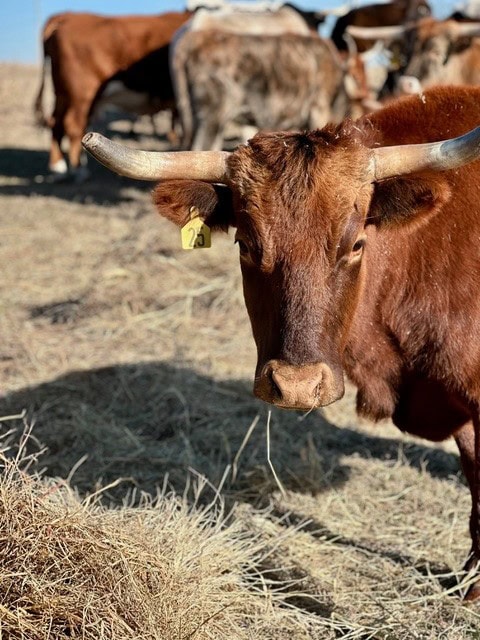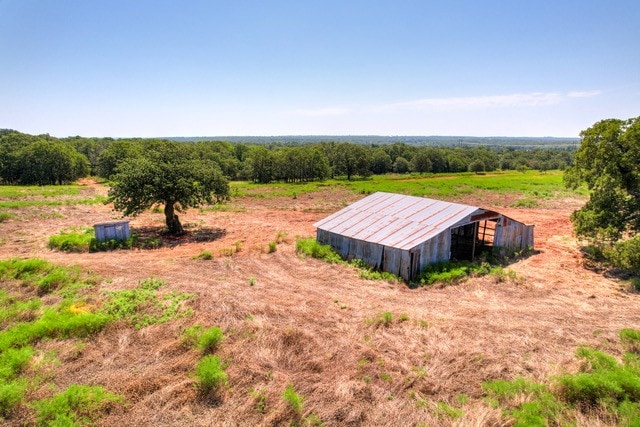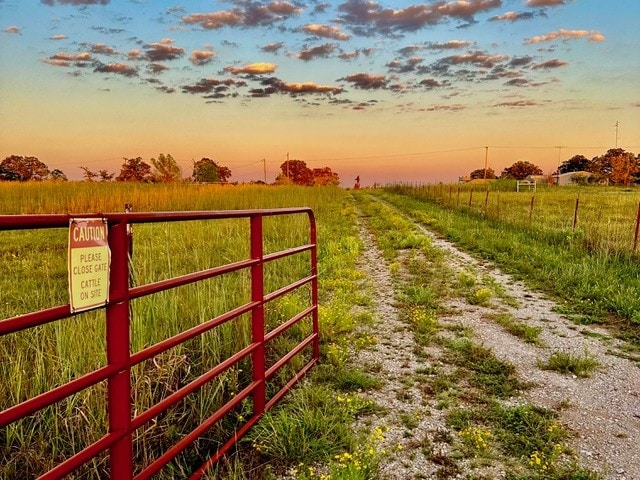Why Buy Land in Oklahoma?
When you explore land for sale in Oklahoma, you’ll discover some of the most attractive buying opportunities in the United States. The state combines affordability with diverse landscapes, making it ideal for farms, ranches, hunting properties, and residential development. Oklahoma delivers outstanding value whether you’re buying your first property or expanding your investment portfolio.
Affordable Land Prices
Oklahoma offers exceptional value for land buyers, ranking as the cheapest state among all its neighbors with the exception of New Mexico. This affordability makes Oklahoma an excellent choice for first-time land buyers and experienced investors alike.
Even better, Oklahoma farmland, cropland, and pasture values increased between 5.2% and 8.6% from 2023 to 2024. This steady appreciation shows the strength of Oklahoma’s land market.
Diverse Types of Land for Sale in Oklahoma
Oklahoma’s varied landscape offers something for nearly every land buyer:
- Recreational land perfect for hunting, camping, and outdoor activities
- Ranch and pasture land ideal for raising livestock
- Residential parcels (1-20 acres) near the growing metro areas of Tulsa and Oklahoma City
- Timberland throughout the eastern regions thanks to Oklahoma’s diverse terrain
Strong Investment Potential
Areas near Tulsa and Oklahoma City show particularly strong development potential. According to The Oklahoman, the top 10 growth cities include Newcastle, Collinsville, Owasso, Mustang, Piedmont, Tuttle, Durant, El Reno, Coweta, and Yukon.
Land values and appreciation rates vary significantly by region, offering diverse investment opportunities:
Northwestern Oklahoma
- Raw land prices range from $862 per acre in the Panhandle to $2,241 per acre in Garfield County
- The Panhandle has seen approximately 70% appreciation over the past 15 years
- Some areas like Woods County have experienced an 8% decrease during the same period
Northeastern Oklahoma
- Average land values range from $3,000 to $4,900 per acre
- Rogers and Wagoner counties have experienced impressive appreciation of 99% and 94% respectively since 2012, according to OSU Extension offices
Southwestern Oklahoma
- Average land values range from $1,407 to $2,574 per acre
- Jackson County has doubled in value (100% appreciation) since 2012
- Kiowa County has seen a solid 33% increase in the same timeframe
Southeastern Oklahoma
- Land values average between $2,500 and $4,100 per acre
- Some counties have experienced remarkable appreciation of up to 125% since 2012
For more detailed agricultural land values, the OSU Extension offices provide comprehensive resources specific to each region.
Tax Benefits and Favorable Regulations
Oklahoma offers several advantages that make land ownership more affordable:
- Agricultural Incentives: Farm, ranch, and timber properties often qualify for special tax assessments and sales tax exemptions on farm equipment, feed, and fertilizer. USDA programs like EQUIP and CPS provide additional support for conservation and productivity.
- Low Property Taxes: Oklahoma boasts the 5th lowest property taxes in the United States.
- Affordable Living: The state’s cost of living runs 15% below the national average.
- Development Flexibility: Many areas offer favorable zoning regulations and water rights policies.
- Off-Grid Options: Rural areas often have minimal restrictions for those seeking an independent lifestyle.
- Economic Development Programs: Opportunity Zones, New Market Tax Credits, and Rural Development Grants create additional financial advantages for landowners.
With affordable prices, diverse land types, strong appreciation rates, and favorable ownership regulations, Oklahoma stands out as one of America’s best-kept secrets for land buyers and investors.

Types of Land For Sale in Oklahoma
Oklahoma’s landscape offers remarkable diversity for potential landowners, from fertile farmland to dense forests and rugged mountains. This variety creates opportunities for agriculture, hunting, recreation, ranching, and investment. Understanding the distinct characteristics of each land type helps buyers identify properties that best match their goals and budget. Whether you’re seeking productive farmland, premier hunting grounds, or a long-term investment, Oklahoma provides options suited to nearly every need and price point.
Farmland and Agricultural Land
Oklahoma’s agricultural heritage dates back generations, from Native American cultivation to the Land Runs of the late 1800s that established the state’s farming foundation. The Dust Bowl of the 1930s led to improved soil conservation techniques that benefit farmers today.
Agriculture dominates Oklahoma’s landscape, with farming and ranching covering 78% of the state—roughly 34 million acres. This extensive agricultural footprint showcases the land’s productivity and the industry’s importance to Oklahoma’s economy.
The state’s diverse climate supports long growing seasons and varied production. Central and western Oklahoma excel at wheat and soybeans, while eastern regions with higher rainfall focus on livestock and timber. Oklahoma ranks among the top producers nationwide for beef cattle, wheat, pecans, poultry, and cotton.
Livestock production anchors Oklahoma agriculture, with the state ranking in the top 5 nationally for cattle. Many landowners combine livestock with crop production to maximize their farm’s potential and spread risk.
Oklahoma offers several land use regulations and incentives that benefit agricultural development. The Agricultural Enhancement and Diversification Program (AEDP) provides grants and 0-interest loans for improving and developing ag products, value added processing and farm diversification. Other key programs include:
- Specialty Crop Block Grant Program
- Healthy Food Financing Program up to $10k from OK Ag Department for food retailers in underserved communities
These incentives, along with agricultural tax exemptions, cost-share programs and rural development grants, make Oklahoma farmland an attractive investment for agricultural producers.
Hunting Land and Mountain Property
Oklahoma boasts a strong hunting tradition and diverse wildlife populations that attract outdoor enthusiasts from across the region. The state’s varied terrain creates perfect conditions for numerous game species, particularly whitetail deer, which thrive in Oklahoma’s mix of woodlands, prairies, and agricultural areas.
The state’s diverse habitats support an impressive variety of game. Whitetail deer hunting drives much of the recreational land market, with Oklahoma regularly producing trophy-class bucks. Wild turkey, elk, bear, antelope, waterfowl, and small game also attract buyers looking for multi-season recreational properties.
Oklahoma’s carefully managed wildlife programs and regulated hunting seasons ensure sustainable populations. Major hunting seasons include:
- Whitetail deer
- Bow: October 1 – January 15
- Gun: November 22 – December 7
- Turkey
- Archery: October 1 – January 15
- Gun: November 1 – November 21
- Additional seasons for elk, bear, antelope, migratory birds, waterfowl, small game, and furbearers. See the Oklahoma Wildlife Department website for complete details.
The state’s four mountain ranges offer stunning scenery and unique recreational opportunities:
- The Arbuckle Mountains in south-central Oklahoma feature rolling hills, hardwood forests, and numerous springs and streams.
- The Ouachita Mountains stretch across the southeastern part of the state, offering dense forests and challenging terrain ideal for hunting and outdoor recreation.
- The Ozark Mountains extend into northeastern Oklahoma, bringing forested hills and clear, cool streams.
- The Wichita Mountains in the southwest provide dramatic granite peaks, mixed grasslands, and one of Oklahoma’s most unique ecosystems. Much of this range exists as a wildlife refuge, making it perfect for hiking, camping, fishing, and wildlife observation rather than hunting.
Many hunting properties serve multiple purposes, combining recreational use with timber production or grazing while providing weekend getaways. Landowners often boost property value by adding food plots, blinds, and trail systems. Properties with both hunting potential and harvestable timber near major cities typically command premium prices, offering both enjoyment and solid financial returns.
Ranches and Investment Land
Ranching stands as a cornerstone of Oklahoma’s agricultural economy. In 2022 alone, cattle ranching generated over $4.5 billion in revenue, making Oklahoma one of the largest producers of beef cattle according to a 2020 University of Wyoming Extension study. Livestock contributes approximately 81% of Oklahoma’s agricultural sales and added $2.7 billion to household earnings in 2021. With roughly 5.45 million cattle, Oklahoma ranks 4th nationally for cattle numbers according to the Oklahoma Farm Bureau.
The Oklahoma National Stockyards, operating since 1901 as one of the world’s largest feeder cattle markets, anchors the state’s global prominence in the industry.
Mixed-use development properties concentrate around Tulsa and Oklahoma City, where urban growth drives demand. Oklahoma land prices remain competitive while showing steady appreciation, making these properties attractive to both operators and investors.
Investment opportunities span traditional agricultural ventures, recreational leasing for hunting, and potential mineral rights revenue. Farm real estate values increased by 8.6% from 2023-2024, though recent indicators suggest more moderate growth ahead. Properties near expanding urban centers show the strongest potential as we approach 2030, with limited supply likely to drive continued price increases.
Commodity markets will influence agricultural land values, making location and versatility crucial factors for investment success. Oklahoma ranch properties offer compelling opportunities at more accessible price points than many neighboring states, providing both current income potential and future appreciation.
Popular Regions for Land Buying in Oklahoma
Arbuckle Mountains
The ancient Arbuckle Mountains offer some of the most unique land for sale in Oklahoma. Dating back 1.4 billion years, these mountains differ dramatically from typical ranges. Years of erosion have exposed fascinating rock formations including sandstone, dolomite, and granite, creating a landscape rich with cliffs, natural springs, and diverse terrain that attracts geologists from around the country.
Land in the Arbuckle region provides proximity to Turner Falls Park, home to Oklahoma’s tallest waterfall and a perfect natural swimming area. The park features excellent hiking trails, cave exploration opportunities, camping areas, and picnic spots. Nearby, the Chickasaw National Recreation Area in Sulphur offers federally protected hiking trails, natural springs, mineral water, waterfalls, and water activities like swimming, fishing, and kayaking.
For water enthusiasts, the Lake of the Arbuckles presents exceptional boating and fishing opportunities, while the Arbuckle Wilderness in Davis delights families with its drive-through safari experience. The surrounding towns enhance the appeal of owning land here – Davis serves as a gateway to Turner Falls with local charm and essential amenities, while Sulphur boasts a vibrant downtown centered around the Artesian Hotel and houses the Chickasaw Cultural Center. Just off I-35 near Springer, curious visitors can experience Magnetic Hill’s unforgettable optical illusion where downhill appears to be uphill.
Ouachita Mountains
The Ouachita Mountains in southeastern Oklahoma offer prime forested landscapes and abundant natural resources. As one of the only mountain ranges in the U.S. that runs east to west instead of north to south, the Ouachitas feature a unique blend of terrain and biodiversity perfect for multiple land uses. The National Forest spans over 1.8 million acres, with 360,000 acres located in Oklahoma. The region showcases shortleaf pine, loblolly pine, oak, and hickory trees across steep and rolling hills ideal for timber management, wildlife habitat, and recreational activities.
This region provides excellent timber investment opportunities with actively managed production. The area also attracts hunters looking for property with abundant wildlife including white-tailed deer, eastern wild turkey, black bear, feral hogs, squirrel, rabbit, bobcat, and coyote. Outdoor enthusiasts value the terrain for its hiking and backpacking trails, camping areas, designated ATV and horseback riding routes, and excellent fishing and kayaking waters.
Ozark Mountains
The Oklahoma Ozarks, primarily in Delaware, Adair, and Cherokee Counties in northeastern Oklahoma, offer a softer, more pastoral landscape compared to other mountain regions in the state. This area features rolling hills, clear streams, and tall hardwood trees like maple, hickory, and oak. The region boasts impressive bluffs and scenic rivers, including the Illinois River, which provides excellent opportunities for fly-fishing, tubing, and kayaking.
A significant advantage of owning property in the Ozarks is the climate – the forested areas with high tree canopies and abundant water sources create temperatures often 5-10 degrees cooler than other parts of the state, though humidity remains higher. The region attracts buyers seeking retreat-style living, hobby farms, and recreational property. Outdoor activities abound with opportunities for hunting white-tailed deer, turkey, and wild hogs, along with excellent fishing spots throughout the area.
The topography supports diverse recreation including hiking, trail-riding, camping, ATVing, kayaking, and river floating, with numerous state parks, trails, and campgrounds nearby. Photography and birdwatching enthusiasts find the spring and fall seasons especially rewarding. Nearby communities enhance the appeal – Tahlequah, the capital of the Cherokee Nation, offers rich cultural experiences and festivals, while Stilwell is known for its Strawberry Festival. Westville, near the Arkansas border, provides a small-town charm with affordable options and proximity to Fayetteville, Arkansas.
Wichita Mountains
The Wichita Mountains, believed to be North America’s oldest mountain range, feature distinctive steep granite cliffs and boulder fields. Less forested than other ranges in the state, this region comprises public lands and privately held ranches. According to the Oklahoma Cattlemen’s Association, the native grasses like buffalo, little bluestem, and grama make this area ideal for cattle grazing operations.
The region offers excellent ranching potential with suitable conditions for rotational grazing due to natural water sources and year-round forage. The higher elevations create cooler temperatures and strong breezes that help reduce heat stress in livestock, making this area particularly valuable for cattle operations.
Accessibility is excellent with Lawton serving as the largest nearby city, complete with livestock markets, feed stores, and a regional airport. Smaller towns like Meers (famous for its store and restaurant), Cache, Indiahoma, and Elgin provide local services and amenities. Major transportation routes including Highway 62, US 277, and I-44 make the area easily accessible. Perhaps most appealing to potential buyers is the region’s location – less than 90 minutes from central Oklahoma City and about 160 miles from Fort Worth, Texas.
Oklahoma Panhandle and High Plains
The Oklahoma Panhandle and High Plains region offers some of the most expansive agricultural opportunities, perfect for large-scale farming and ranching operations. Known for its flat terrain, fertile soils, and wide-open horizons, this area has been central to Oklahoma’s agricultural economy for over a century.
This region features minimal tree cover and gently rolling terrain, making it perfect for row crops including winter wheat, sorghum, corn, cotton, alfalfa, peanuts, and soybeans. Property typically comes in large parcels spanning hundreds or thousands of acres, allowing for mechanized efficiency in farming operations.
Investors find this region particularly attractive due to values that remain relatively lower than in neighboring states. Much of the available property already has essential infrastructure in place, including pivot irrigation systems, storage facilities, road access, and fencing. Forward-thinking buyers also recognize the potential for regenerative agriculture and carbon credit programs that could provide additional income streams for owners in this region.
Common Uses for Land in Oklahoma
Agricultural and Farming
Oklahoma’s varied terrain supports a range of agricultural activities. Cattle ranching is common in the western and central regions, where a cow-calf pair typically needs 10–30 acres. Ideal properties offer solid fencing, water access, and working pens.
Dairy farming thrives in the cooler, higher rainfall areas of the northeast and central parts of the state, requiring more infrastructure like barns, milking parlors, and waste systems—especially near Tulsa and Ada.
Row crops such as wheat and soybeans grow well in the Panhandle, north-central counties, and river valleys. Central and north-central regions offer fertile soils (Class I–III), while western areas often need irrigation from wells or the Ogallala Aquifer due to lower rainfall.
Oklahoma’s farming regulations generally favor agricultural producers, offering minimal zoning restrictions in rural areas and property tax breaks for agricultural use. Compliance oversight from agencies like the Oklahoma Department of Agriculture and USDA focuses on conservation practices, water usage, and pesticide management without creating excessive regulatory burdens.
Recreational and Hunting Land
Recreational land use offers diverse opportunities in Oklahoma. Hunting leases generate income while managing wildlife populations. Owners should create written agreements and verify liability coverage. Camping on private land requires owner permission and basic infrastructure like cleared areas or water catchment systems increases usability.
Off-grid living continues to grow in rural counties with minimal zoning. Buyers should plan for septic systems, water access, and alternative power sources. Always verify county regulations, utility availability, and access rights before purchasing.
Oklahoma supports hunting for white-tailed deer, wild turkey, waterfowl, dove, quail, and small game with seasons varying by species and region. Both archery and firearm options are available, along with controlled hunts and public hunting areas, making the state attractive to recreational buyers.
Investment and Development
Oklahoma land for sale offers diverse investment opportunities beyond traditional agricultural and recreational uses. Agricultural property in rural and western regions serves well for farming, ranching, and leasing for grazing or hunting. Meanwhile, residential land near metro areas like Oklahoma City and Tulsa attracts buyers seeking acreage for homesteads, subdivisions, or rural retreats away from urban congestion.
Commercial land opportunities exist primarily along highways, in growing towns, or near industrial centers. These locations work well for storage facilities, retail developments, or energy-related operations. Mixed-use parcels have gained popularity by allowing combinations like homes with workshops, farms with lodging options, or ranches with event venues that diversify income potential.
Zoning regulations vary significantly throughout Oklahoma. Many rural and unincorporated areas have minimal or no formal zoning restrictions, providing substantial flexibility for development. In cities and incorporated areas, you’ll find more structured zoning designations including agricultural, residential, commercial, and industrial classifications. Most construction projects require permits for building, septic systems, electrical work, and utility connections regardless of location.
Before purchasing land for development, check with local city or county planning offices to verify zoning and permitting requirements. This step prevents costly delays and legal complications, particularly for higher-density or income-generating projects.
Oklahoma Real Estate Market and Home Values
The Oklahoma land market has shown impressive growth in recent years. Over the past decade, land values have appreciated significantly, with some counties experiencing increases exceeding 100%. Cleveland County saw a remarkable 161% rise between 2012-2014 and 2021-2023, while Bryan County posted a 126% increase. According to OSU Extension, this trend highlights the strong potential for long-term investment gains.
Financing options exist through various institutions including Oklahoma AgCredit, which offers loans with competitive rates for 30-year terms, typically requiring a 15% down payment. However, rising land prices combined with increasing interest rates create challenges for new buyers, making thorough financial preparation essential. Working with financial advisors, agricultural extension agents, and experienced land brokers helps navigate these complexities. These experts can assess your financial readiness, identify suitable financing programs, and develop realistic investment strategies tailored to your goals.
Location significantly impacts land values throughout the state. Property near high-performing school districts like Edmond, Norman, or Jenks commands premium prices, especially for residential development, as families prioritize educational access. Similarly, land close to shopping centers, healthcare facilities, and dining options tends to appreciate faster than more isolated properties.
In metropolitan areas like Oklahoma City and Tulsa, proximity to public transportation routes and major highways drives higher demand and faster appreciation. Rural properties offer more affordable entry points but may experience slower value growth unless development expands outward from urban centers.
Successful buyers consider not just current amenities but also future infrastructure plans. New schools, road expansions, or commercial developments can dramatically increase land values over time. Before purchasing, consult with local real estate experts to understand market trends and growth patterns in your target area.
Finding the Right Land for Sale in Oklahoma
Finding the perfect piece of Oklahoma land requires careful research and professional guidance. This process goes beyond simply browsing listings—you’ll need to understand legal considerations, property features, and local market conditions. Here are essential tips to help you locate and purchase the right piece of land for sale in Oklahoma.
Working With a Local Real Estate Agent
Partnering with a real estate agent who specializes in land transactions gives you a significant advantage in your search. Local agents understand regional price trends, can identify fair market value across different counties, and spot potential issues that general residential agents might miss. They also maintain valuable networks with surveyors, title companies, and rural property lenders. Consider working with a KW Land® member—these professionals are equipped with the training, tools, and experience needed to guide you through the complexities of land real estate with confidence.
Using Land Listing Resources
Using online resources like kwland.com can significantly enhance your search for land for sale in Oklahoma. These platforms offer powerful tools that allow you to filter properties by county, acreage, price range, and land type, helping you narrow your search efficiently. You can also review detailed property descriptions, photos, maps, and additional resources such as soil reports. These specialized platforms often provide more comprehensive information about land parcels than general real estate websites, enabling you to identify promising properties before scheduling in-person visits.
Key Legal Considerations When Buying Land for Sale in Oklahoma
Before purchasing land in for sale in Oklahoma, you’ll need to investigate several legal aspects:
- Zoning Laws: Confirm that your intended use aligns with local zoning regulations. Rural properties may have agricultural, residential, or mixed-use designations that affect what you can build or develop.
- Property Taxes: Research the tax rate in your target county and whether the property qualifies for agricultural or other exemptions that could reduce your tax burden.
- Easements: Identify any easements that might affect your use of the property, including utility corridors, shared driveways, or neighbors’ access rights.
- Mineral Rights: Oklahoma has significant oil and gas activity, so determine whether mineral rights convey with the property or are retained by previous owners.
- Water Rights: Understand what water sources exist on the property and any restrictions on their use, particularly important for agricultural operations.
County clerk offices maintain public records that can provide this information. A knowledgeable real estate agent can also assist in navigating these aspects, ensuring you have the information needed to make an informed and confident purchase.
Evaluating Infrastructure and Utilities
Access to essential services varies widely across Oklahoma, especially in rural areas:
- Road Access: Confirm legal, year-round access to the property. Some parcels may only have seasonal roads or require crossing another owner’s property.
- Electricity: Check whether power lines reach the property or calculate costs to extend service from the nearest connection point.
- Water: Determine if the property has municipal water access, an existing well, or would require drilling a new well.
- Septic Systems: Many rural properties require private septic systems rather than municipal sewer connections.
- Internet: Research available internet service providers and connection speeds, especially important if you plan to work remotely.
- Cell Phone Coverage: Test reception at various points on the property during your visit.
Contact utility companies serving the area to verify availability and connection costs before finalizing your purchase.
By thoroughly researching these aspects of potential properties and working with knowledgeable professionals, you’ll be well-positioned to find the right piece of Oklahoma land for sale that meets your needs and avoids costly surprises. Whether you’re seeking farmland, a hunting property, or investment land, taking these steps will help ensure your purchase brings long-term satisfaction and value.
Start Your Search for Land For Sale in Oklahoma
Buying land in Oklahoma offers numerous advantages, from its diverse landscapes and strong agricultural opportunities to its favorable property values. Whether you’re looking for a rural retreat, agricultural land, or a space to build your dream home, Oklahoma’s variety of properties provides something for every buyer.
To navigate the land-buying process with confidence, reach out to KW Land® for expert guidance and assistance in finding the perfect property.
Ready to find your perfect piece of Oklahoma land? Start exploring available properties today!




